Save the Last Dance. Just the title itself sparks a mix of nostalgia, confusion, and maybe a little bit of secondhand embarrassment. What exactly is this movie about? Is it about ballet? Hip-hop? Interracial romance? Awkward fashion choices? The sheer number of themes and, frankly, baffling plot points could fill a semester-long film studies course. If you’re anything like us, you’ve probably found yourself whispering “Save Me The Last Dance” in moments of utter bewilderment, hoping someone, anyone, can explain this cinematic time capsule.
When Save the Last Dance premiered in 2001, it was marketed as a teen romance with a dance backdrop. We were introduced to Sara (Julia Stiles), a ballet dancer whose dreams are derailed by tragedy, forcing her to move to Chicago and navigate a new high school, a new culture, and a whole new world of dance. Initially, you might expect another 10 Things I Hate About You-esque performance from Stiles, a sharp-tongued, independent heroine. Instead, we get Sara, who, bless her heart, seems perpetually lost and bewildered by everything around her.
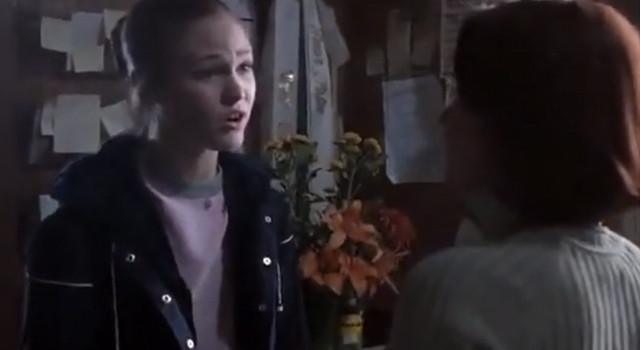 Sara looking confused in a pink sweater set and parka.
Sara looking confused in a pink sweater set and parka.
Sara’s Style and the Mystery of Early 2000s Fashion
Let’s talk about Sara’s fashion, a character in itself in this movie. Before her “makeover” courtesy of Chenille (Kerry Washington), Sara’s style can only be described as…blandly ballerina-esque meets suburban confusion. Think muted colors, oversized parkas, and sweater sets that scream “I peaked in middle school.” Even her audition outfit, complete with a slicked-back bun, feels like a relic from a bygone era, despite the movie being set in the early 2000s. It’s a visual representation of her out-of-placeness, highlighting just how much she stands apart from her new urban environment.
Her initial reaction to hip-hop music is equally perplexing. Sara acts as if she’s stumbled upon an alien genre, despite it being 2001 and hip-hop dominating mainstream music for over a decade. It’s like she’s never heard Ice Cube’s “You Can Do It” at a school dance – an anthem practically ingrained in the millennial DNA. This apparent cultural cluelessness makes it hard to fully connect with Sara, whose defining characteristic seems to be… well, a lack of discernible characteristics.
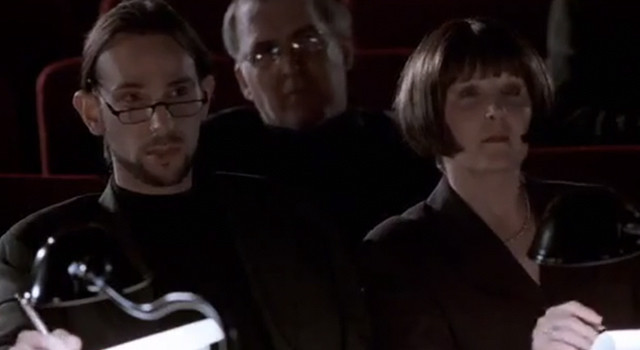 The casting director's vision of adults in the arts at Sara's audition.
The casting director's vision of adults in the arts at Sara's audition.
Derek and Chenille: The Unsung Heroes of Save the Last Dance
This is where Derek (Sean Patrick Thomas) and Chenille Reynolds step in, and frankly, Save the Last Dance becomes their story. Without this dynamic brother-sister duo, Sara would likely remain a bewildered ballet dancer lost in a hip-hop world. The movie isn’t about them fundamentally changing her, but rather about them nudging her, sometimes forcefully, to shed her sheltered naiveté and embrace the world around her. Derek and Chenille are the heart and soul, the true protagonists who guide Sara (and the audience) through the cultural landscape of early 2000s Chicago.
Chenille, in particular, is a force of nature. She’s the ultimate style guru, the social compass, and the patient friend Sara desperately needs. Imagine if Sara actually had gotten into Juilliard right away? She’d probably get lost on the subway and have her backpack stolen. Chenille is the Cher to Sara’s Tai, but with even more patience. Remember the iconic makeover scene? Chenille doesn’t just change Sara’s clothes; she gives her a crash course in how to exist in her new reality.
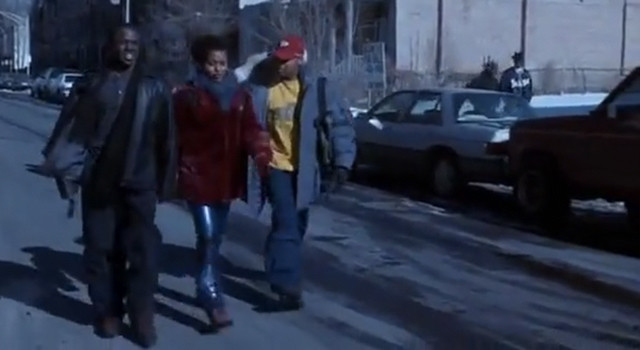 Chenille, the fashion-forward savior, in faux fur and leather pants.
Chenille, the fashion-forward savior, in faux fur and leather pants.
From Ballet to Hip-Hop: Sara’s Dance Awakening
Sara’s journey in Save the Last Dance is also a dance awakening. Coming from the rigid structure of ballet, she’s initially thrown by the自由 (zìyóu – freedom) and expressiveness of hip-hop. Her awkward staring at Nikki (Bianca Lawson) dancing in the cafeteria perfectly illustrates her culture shock. “It’s just a little hip-hop,” Chenille calmly explains, as if Sara has just asked about quantum physics.
Derek becomes Sara’s dance mentor, patiently guiding her through the rhythms and moves of hip-hop. This isn’t just about learning steps; it’s about learning a new language, a new way of expressing herself. The dance scenes, while sometimes veering into cheesy montage territory, are crucial in showing Sara’s transformation. She starts stiff and hesitant, but gradually, with Derek’s help, she finds her groove. The scene where Derek helps her find the beat to “Da Rockwilder” is particularly telling – a Juilliard-worthy ballet dancer struggling to grasp a basic hip-hop rhythm? It highlights the cultural gap she needs to bridge.
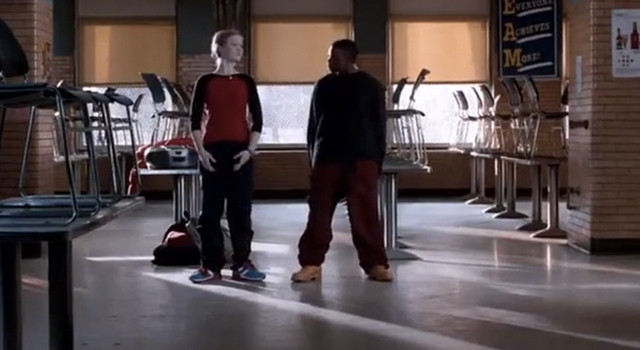 Derek patiently teaching Sara hip-hop dance moves.
Derek patiently teaching Sara hip-hop dance moves.
Fashion as a Metaphor: Dressing the Part of Self-Discovery
The fashion in Save the Last Dance isn’t just a series of questionable early 2000s outfits; it’s a visual metaphor for Sara’s evolving identity. Initially, she dresses like an outsider, conspicuously out of sync with her surroundings in her bright winter coat and striped sweaters. As she spends more time with Derek and Chenille, her style shifts. She starts adopting elements of their wardrobes, mirroring Derek’s tomboyish aesthetic and Chenille’s trendy urban looks.
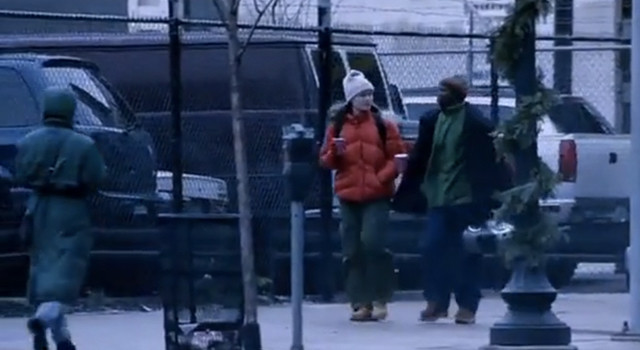 Sara and Derek in complementary outfits, showcasing her style evolution.
Sara and Derek in complementary outfits, showcasing her style evolution.
This sartorial transformation reflects her internal changes. She’s shedding her old, sheltered self and embracing a new identity influenced by her friends and her experiences in Chicago. The paisley top moment, mirroring Chenille’s clubbing outfit, is a clear example of this stylistic assimilation – or perhaps, integration. It’s not just about changing clothes; it’s about finding a style that reflects her evolving sense of self.
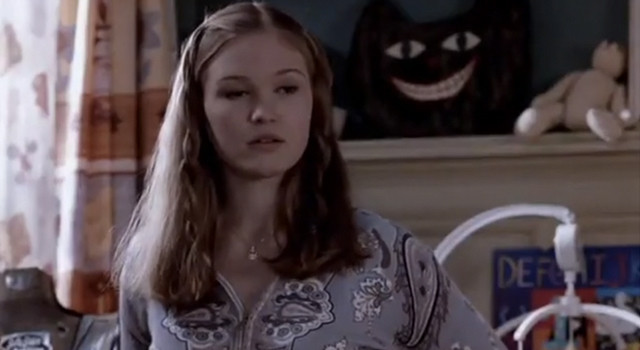 Sara in a paisley top, mirroring Chenille's style.
Sara in a paisley top, mirroring Chenille's style.
Beyond Dance and Romance: The Real Heart of Save the Last Dance
Ultimately, Save the Last Dance is more than just a teen dance movie or a cross-cultural romance. It’s about friendship, acceptance, and personal growth. It’s about how Derek and Chenille “save” Sara, not in a romantic, damsel-in-distress way, but by offering her guidance, support, and a much-needed dose of reality. They teach her about more than just hip-hop; they teach her about empathy, understanding, and navigating a world vastly different from her privileged suburban upbringing.
The climax at Juilliard, where Sara performs a hip-hop infused ballet routine, is less about landing a spot at a prestigious dance school and more about showcasing her transformation. She falls, yes, but she gets back up, driven by her newfound confidence and the support of Derek and Chenille in the audience. It’s a performance that screams, “I’ve changed,” a testament to the power of friendship and self-discovery.
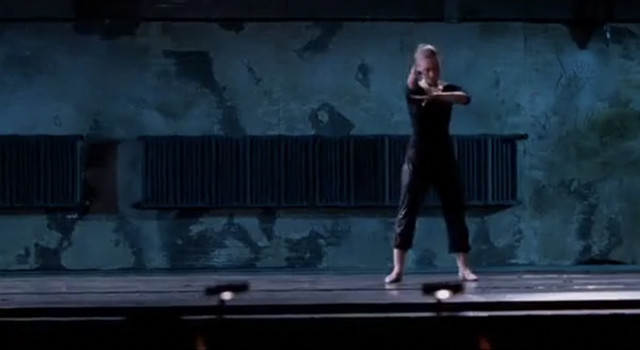 Sara and Derek's supportive partnership at the Juilliard audition.
Sara and Derek's supportive partnership at the Juilliard audition.
The Lasting Dance: Why Save the Last Dance Still Resonates
Save the Last Dance is a product of its time, a snapshot of early 2000s teen cinema. It’s cheesy, sometimes cringe-worthy, and definitely raises more questions than it answers. But beneath the surface of awkward fashion and questionable plot points, there’s a genuine story about human connection and the transformative power of friendship. While we might still scratch our heads at some of Sara’s choices and wonder if she truly deserved Derek and Chenille’s unwavering patience, the movie’s core message about finding yourself with the help of others still resonates. And perhaps, that’s why we still find ourselves talking about, and yes, even whispering, “save me the last dance” all these years later.
